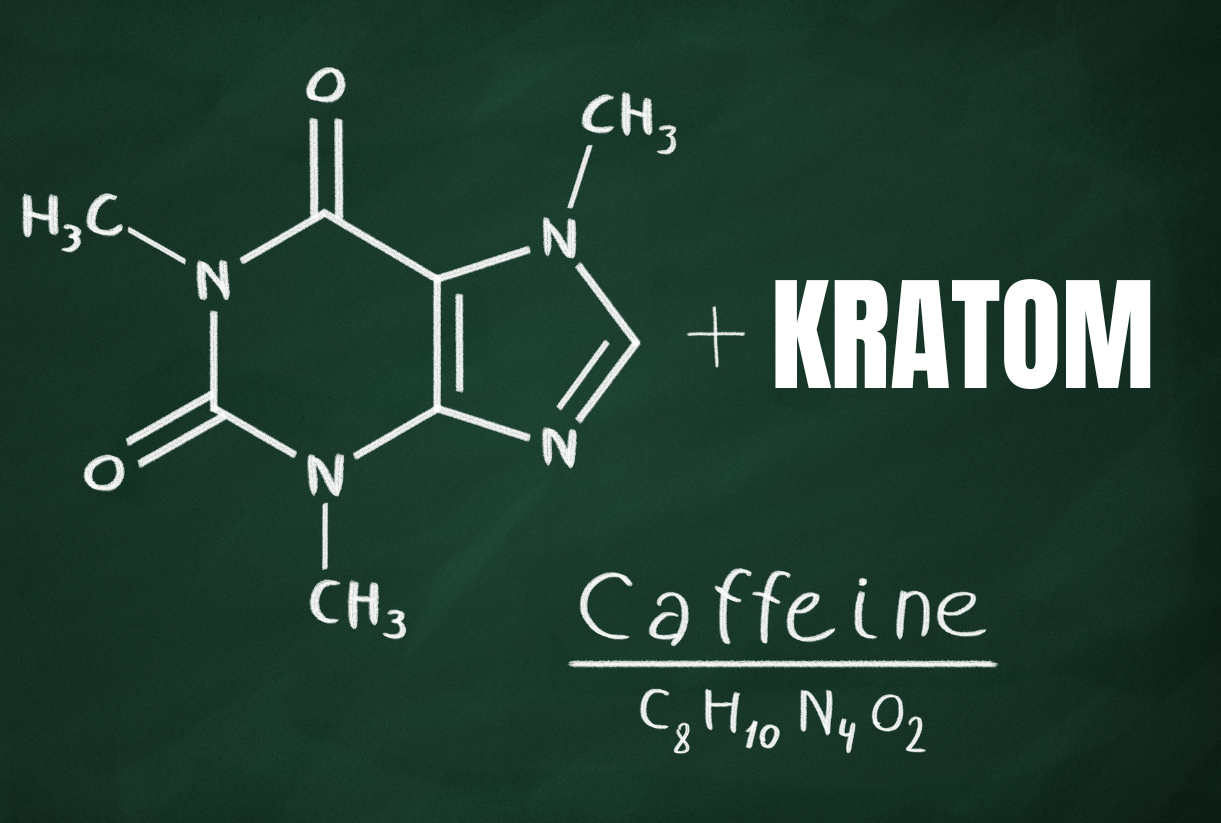Contents
Ashwagandha & Kratom: Differences, Benefits, and the Right Dosage for You
- Written by David
- Updated on April 23, 2025
- Published on
- Kratom Mixing & Safety
When it comes to natural remedies, ashwagandha, and kratom have gotten a lot of attention for their unique benefits. Both are plant-based and have been used for centuries in traditional practices but serve very different purposes. Whether you want stress relief, improved focus or physical relaxation these two herbal supplements have interesting options.
You’re probably wondering how ashwagandha and kratom compare or if they can work together. Understanding their origins, effects and uses can help you make informed decisions for your wellness journey. Each has its own advantages but knowing how they work is key to unlocking their full potential.
What Are Ashwagandha and Kratom?
Ashwagandha, scientifically known as Withania somnifera, is an adaptogenic herb from Ayurvedic medicine. It’s used traditionally to increase stress resilience, boost energy and overall health. Native to India, the Middle East and North Africa ashwagandha contains withanolides which are linked to its calming and restorative properties.
Kratom, or Mitragyna speciosa, is a tropical tree from Southeast Asia. Its leaves contain alkaloids like mitragynine and 7-hydroxymitragynine that interact with your brain’s receptors. Historically people used kratom for relief management, energy enhancement and mood improvement. Modern use is often for relaxation and physical comfort when taken in specific doses.
Key Benefits of Ashwagandha
Ashwagandha, an adaptogenic herb, has several benefits for mental and physical well being. It’s known for managing stress while improving energy and cognitive performance.
Stress and Anxiety Relief
Ashwagandha reduces cortisol levels, eases stress and anxiety symptoms. Research in the journal Medicine shows it can lower cortisol by up to 30% and increase emotional resilience. It’s also used traditionally to calm the mind and improve sleep quality.
Boosting Energy and Stamina
Ashwagandha supports energy production by improving the body’s response to physical and mental exertion. Studies published by Nutrients show it increases oxygen consumption during exercise, boosts stamina by up to 13% in athletes. This makes it suitable for daily vitality.
Cognitive Function
Ashwagandha improves memory and focus through its neuroprotective and anti-inflammatory properties. Research from Phytotherapy Research shows it enhances executive function and reaction time. Regular use can support long term cognitive health.
Key Benefits of Kratom
Kratom from the leaves of the Mitragyna speciosa tree has its own benefits due to its alkaloid content particularly mitragynine and 7-hydroxymitragynine. These compounds are responsible for kratom’s various uses in physical and mental well being.
Relief Management
Kratom’s alkaloids interact with opioid receptors in the brain providing analgesic effects. It’s effective for chronic pain conditions like arthritis, fibromyalgia or back pain. Many turn to kratom as a natural alternative for relief management.
Energy Boosting Effects
Low doses of kratom acts as a stimulant, increases physical energy and mental clarity. People in Southeast Asia used kratom to combat fatigue during physically demanding tasks. Its stimulating properties can improve focus and productivity when taken in the right dose.
Mood Enhancement
Kratom promotes relaxation and mood upliftment by influencing serotonin and dopamine pathways. This can alleviate symptoms of anxiety, depression and stress. Mitragynine’s interaction with these neurotransmitters often creates a sense of well being and calmness for users looking for emotional balance.
Ashwagandha and Kratom Comparison
Ashwagandha and kratom are very different in terms of uses, safety and legal status. Understanding these differences helps in making informed decisions that suits your needs.
Differences in Uses
Ashwagandha is for stress management, energy production and cognitive function. It reduces cortisol levels and increases emotional resilience while promoting long term vitality and mental clarity. Traditional Ayurvedic practices recommend ashwagandha for overall physical and mental well being.
Kratom is for relief management, mood upliftment and energy enhancement. Its alkaloids provide potent analgesic effects and interact with brain receptors for relief management. At low doses kratom increases energy and focus while at higher doses it relaxes.Ashwagandha is generally well tolerated with minimal side effects like mild stomach upset or drowsiness which subsides with proper dosing. Long term use within recommended limits is considered safe. Kratom is used for its natural benefits and when taken responsibly is well tolerated by most users. As with any botanical proper dosing is key to a positive experience.
Legal Status and Availability
Ashwagandha is legal and widely available worldwide in various forms, capsules, powders and teas. As a dietary supplement it’s available in health stores and online.
Kratom is widely available and legal in many U.S. states and international regions, many users can experience its natural benefits. However regulations can vary, some areas have restrictions. To ensure a smooth buying experience always check local laws before buying kratom.
Should You Take Ashwagandha and Kratom Together?
Combining ashwagandha and kratom has gained attention for its potential to enhance its effects. While both have unique benefits understanding the synergy, risks and precautions is key before use.
Potential Benefits of Combining
Taking ashwagandha and kratom together may complement each other. Ashwagandha reduces stress by lowering cortisol levels and kratom relaxes by interacting with opioid and serotonin pathways. When taken in the right dose, this combination might improve mood and relief more than either alone.
Ashwagandha restores energy and cognitive function and kratom at lower doses boosts physical energy and mental clarity. For example you can use ashwagandha for long term stress resilience and kratom for short term relief management or focus.
Both can support emotional balance. Ashwagandha enhances emotional resilience indirectly by regulating stress hormones and kratom uplifts mood directly through dopamine activation. Combining them responsibly can support users managing stress related mood challenges.
Precautions
Always consult a healthcare provider before combining supplements especially if you have pre-existing health conditions or taking medication. This ensures safety and prevents interactions or contraindications.
Prioritize buying high quality, lab tested products from trusted sources like Bagus Botanicals, where every batch is carefully sourced and rigorously tested to ensure purity, safety and effectiveness.
Summary
- Ashwagandha and Kratom serve different purposes: Ashwagandha is for stress relief, energy and cognitive support while kratom is for relief management, mood improvement and energy.
- Ashwagandha is for long term benefits: This adaptogen reduces cortisol levels, improves stamina and mental clarity with minimal side effects when used correctly.
- Kratom has varying effects based on dosage: At low doses it’s a stimulant, increases energy and focus; at higher doses it’s for relaxation and relief management but carries higher risk of dependency.
- Combining ashwagandha and kratom can amplify benefits: With cautious use they can complement each other to improve mood, reduce stress and enhance cognitive and physical performance.
- Safety and legal matters are important: Ashwagandha is widely available and well tolerated, kratom’s legal status varies and requires monitoring to avoid dependency and side effects.
- Consult a healthcare provider before use: Always seek professional advice to ensure safe usage especially when combining supplements or if you have underlying health conditions.
Summary
Ashwagandha and kratom have different benefits for different needs. Whether you need stress relief, cognitive support, relief management or mood improvement understanding these natural remedies can help you decide.
While both have their uses, safety and proper usage is key. Always consult a healthcare professional before adding them to your routine especially if you’re planning to combine the two.
By being mindful and informed you can use them effectively for your overall well-being.
Shop lab tested kratom at Bagus Botanicals and try it out!
FAQ
What is ashwagandha used for?
Ashwagandha is an adaptogen used for stress relief, energy, sleep and cognitive function. It reduces cortisol levels and promotes emotional resilience making it a popular choice for overall stress management and mental well-being.
What are the benefits of kratom?
Kratom is used for relief management, mood elevation and increased energy. At lower doses it’s for focus and energy, at higher doses it’s for relaxation and mood elevation. Its analgesic properties is helpful for chronic pain conditions.
Can I take ashwagandha and kratom together?
Combining ashwagandha and kratom may offer benefits like reduced stress and relaxation. However interaction between the two is not studied and combining them may lead to increased side effects like drowsiness or dizziness. Consult a healthcare provider before combining supplements.
Is ashwagandha safe?
Yes, ashwagandha is safe when used correctly. It has minimal side effects like mild nausea or drowsiness and is well tolerated by most. However consult a healthcare provider if you’re pregnant, nursing or taking medications.
Is kratom safe?
Kratom is riskier than ashwagandha. Use kratom responsibly and consult a healthcare provider.
Is ashwagandha legal everywhere?
Yes, ashwagandha is legal and widely available in most countries. It’s sold as a supplement or herbal remedy and has no significant restrictions.
Can kratom help with sleep?
Yes, kratom can improve sleep by reducing stress and promoting relaxation making it easier to fall and stay asleep.
Who should avoid kratom?
Those with history of substance dependency, taking medications or with certain health conditions should avoid kratom. Pregnant or nursing women should also avoid kratom. Always consult a healthcare provider before use.




